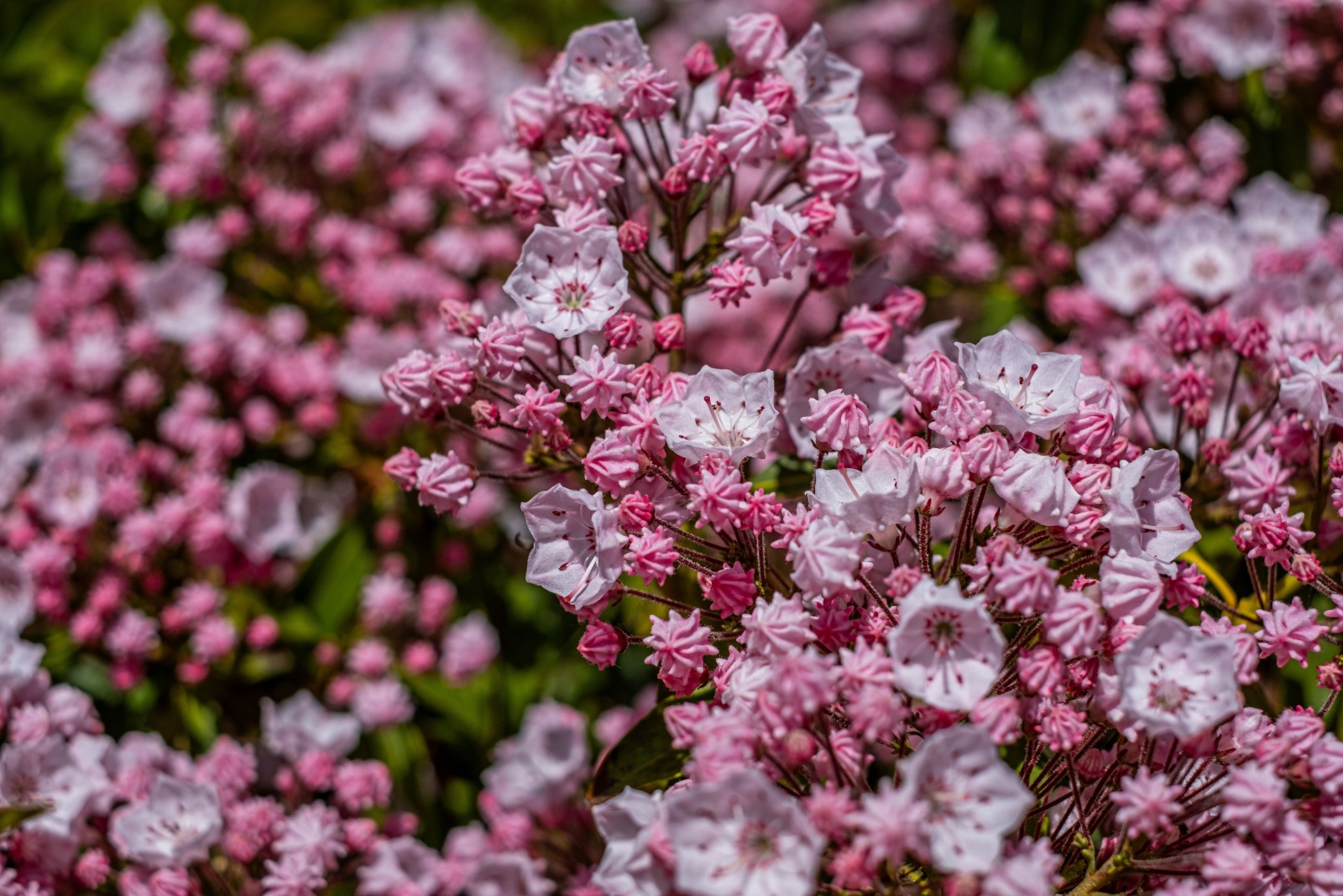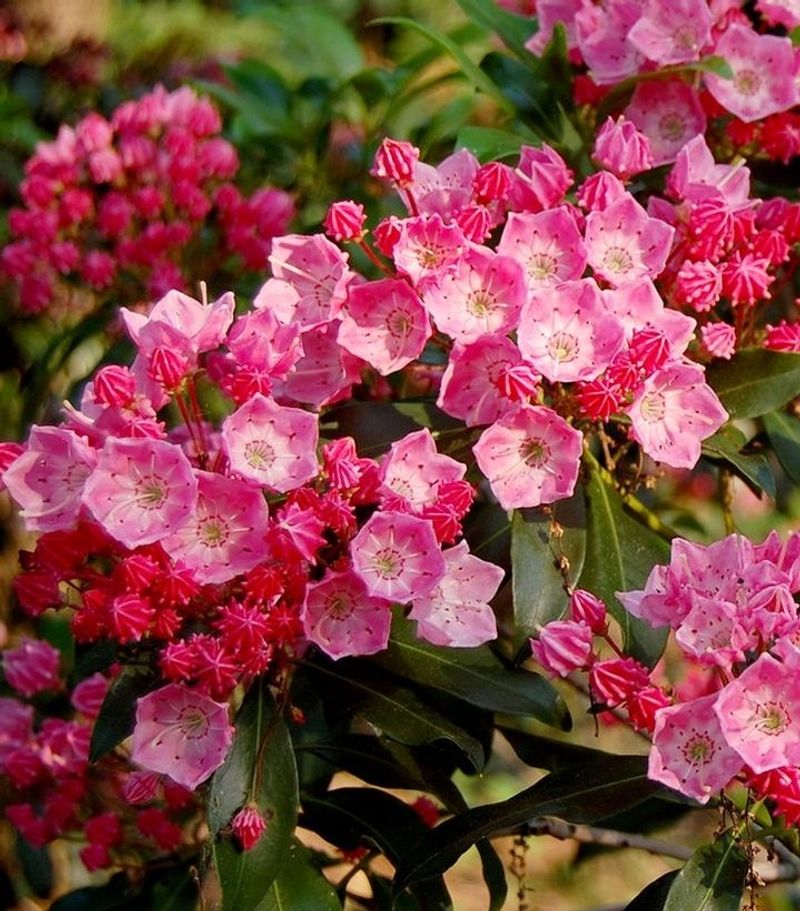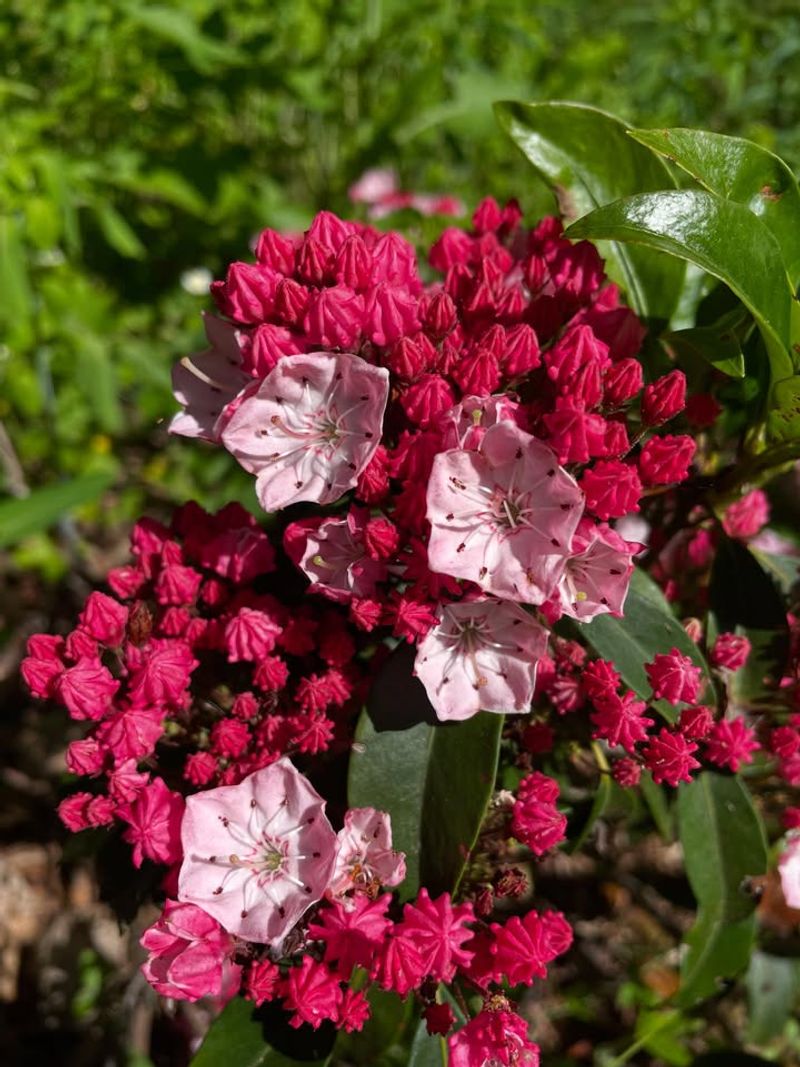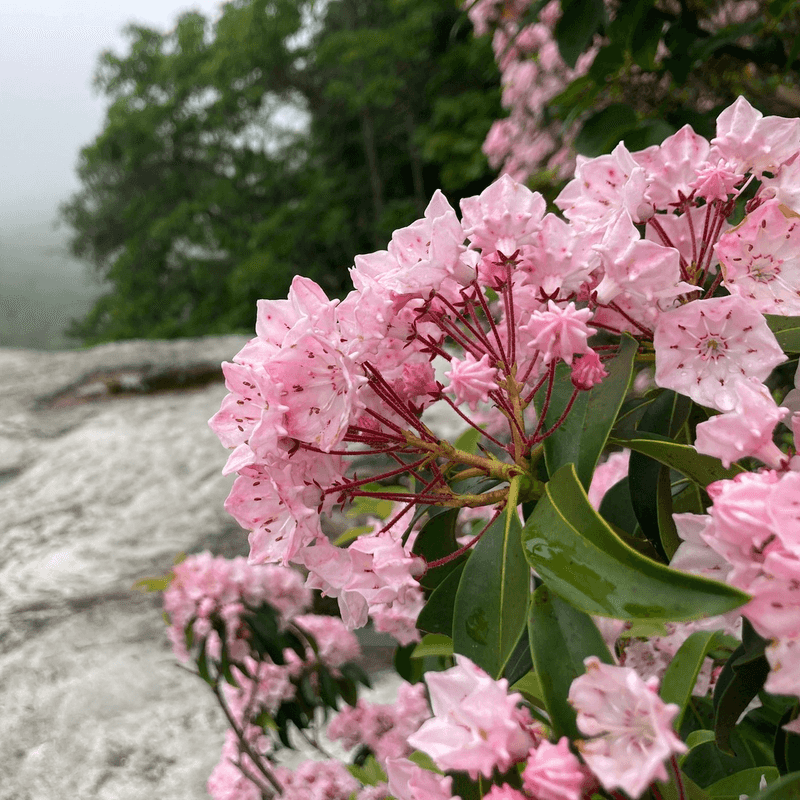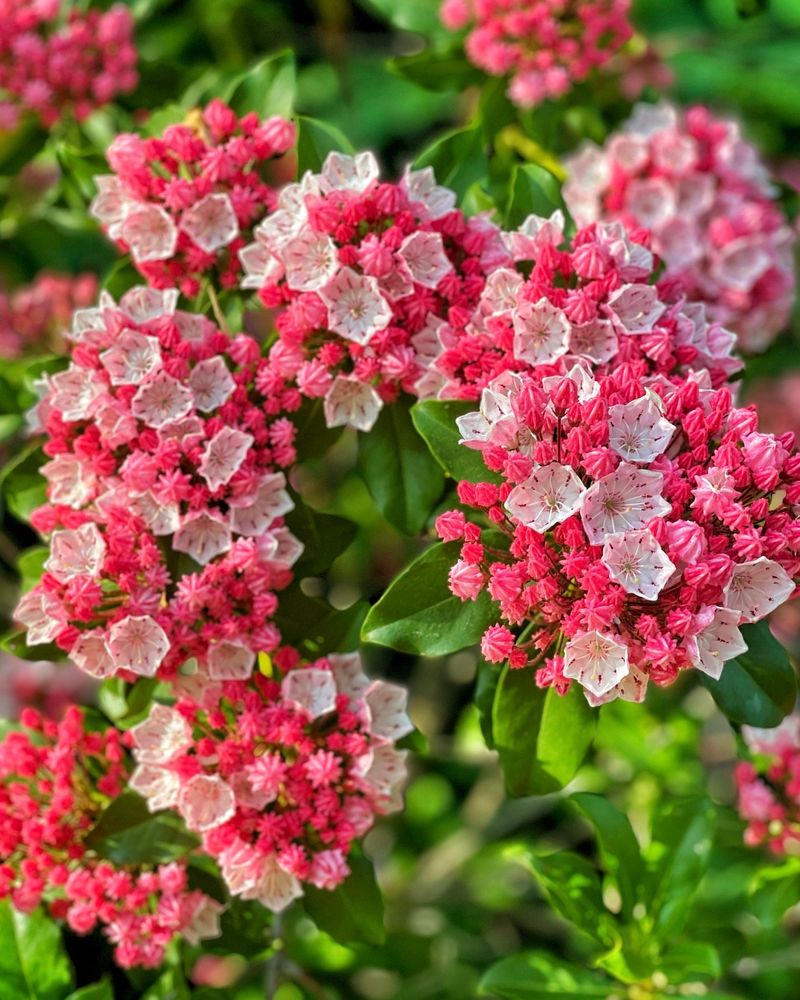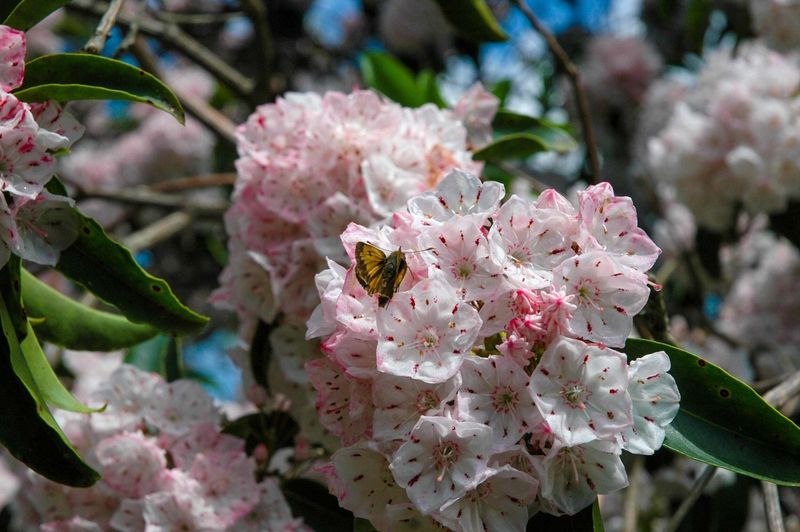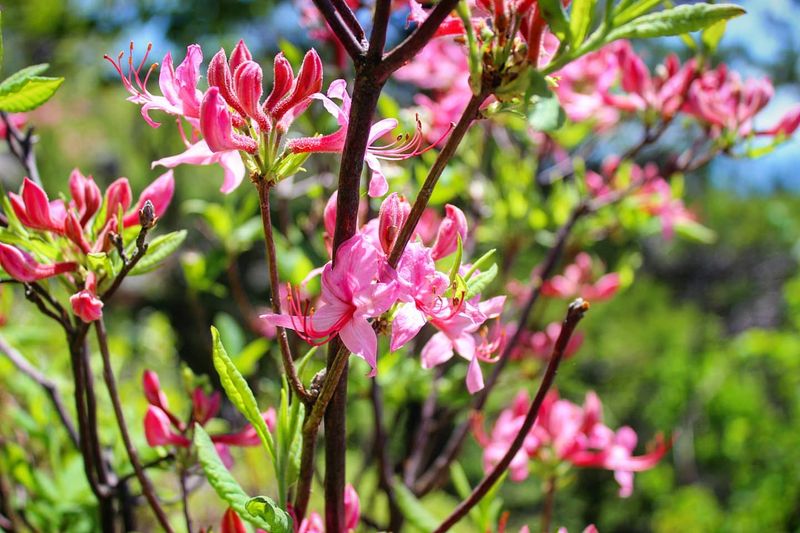A burst of soft pink can transform an Oregon garden, even when the skies turn gray. One hardy shrub stands out for delivering that reliable color show, thriving through rain, cold, and shifting seasons without missing a beat.
With glossy evergreen leaves and blooms that steal the spotlight each spring, mountain laurel adds charm, texture, and a glow that lingers long after the petals fade.
1. Native Beauty With Adaptable Growing Habits
Mountain laurel thrives in Oregon’s climate, making it a favorite among local gardeners. Originally from the eastern United States, this hardy shrub has adapted beautifully to Pacific Northwest conditions.
The plant prefers acidic soil and partial shade, which matches perfectly with Oregon’s natural environment. Its adaptability means you won’t need to fuss over it constantly once established.
Gardeners love how mountain laurel fits into existing landscapes without demanding special treatment or complicated care routines.
2. Spectacular Spring Blooming Season
When May and June arrive, mountain laurel puts on an absolutely breathtaking flower show. Clusters of pink blooms cover the entire shrub, creating a stunning visual feast that neighbors will envy.
Each individual flower resembles a tiny pink umbrella with delicate patterns inside. The blooms last for several weeks, giving you plenty of time to enjoy their beauty.
Peak blooming happens when temperatures warm up consistently, signaling the arrival of true spring weather across Oregon.
3. Evergreen Foliage Year-Round Appeal
Even when flowers fade, mountain laurel keeps your garden looking vibrant with its glossy evergreen leaves. The thick, leathery foliage stays green throughout winter, providing structure and color when other plants go dormant.
This year-round interest makes mountain laurel an excellent investment for any landscape design. The dark green leaves create a perfect backdrop for other flowering plants during summer and fall.
Many gardeners appreciate having attractive foliage that requires minimal maintenance during rainy Oregon winters.
4. Perfect Size For Garden Borders
Growing to about four to eight feet tall, mountain laurel fits perfectly into most garden spaces without overwhelming them. Unlike massive shrubs that take over entire yards, this plant maintains a manageable size.
Gardeners often use mountain laurel to create natural borders along pathways or property lines. The compact growth habit means less pruning work for you.
Spacing plants about four feet apart allows them to grow together into an attractive hedge while maintaining good air circulation.
5. Low Maintenance Care Requirements
Busy gardeners rejoice because mountain laurel doesn’t demand constant attention or complicated care schedules. Once established, the shrub tolerates Oregon’s wet winters and drier summers remarkably well.
Adding a layer of mulch around the base helps retain moisture and keeps roots cool during warmer months. Occasional watering during extended dry spells keeps plants happy.
Pruning needs are minimal, usually just removing dead branches or shaping after flowering finishes for the season.
6. Wildlife-Friendly Garden Addition
Bees absolutely adore mountain laurel flowers, buzzing excitedly around the pink blooms throughout spring. Watching pollinators work their magic adds extra enjoyment to your garden experience.
Butterflies and hummingbirds occasionally visit too, creating a lively ecosystem right in your backyard. Supporting local wildlife becomes effortless when you include plants like mountain laurel.
The dense evergreen foliage also provides shelter for small birds during storms and nesting season, making your garden a true wildlife haven.
7. Companion Planting Possibilities
Mountain laurel pairs beautifully with other acid-loving plants like rhododendrons, azaleas, and camellias common in Oregon gardens. Creating harmonious plant combinations becomes simple when species share similar growing requirements.
Ferns and hostas make excellent groundcover companions beneath mountain laurel’s canopy, filling in empty spaces with interesting textures. The layered look creates depth and visual interest throughout your landscape.
Mixing bloom times ensures your garden stays colorful from early spring through late summer with minimal planning effort.

